Yesterday I attended my first foraging class. Lisa Rose Starner is offering a monthly series of walks around Trillium Haven Farm, which is where I’m a CSA member. I haven’t had that much fun tromping around in fields since I was a kid.
I wish I could describe just how magical it was, the nine of us women out in nature. It had been raining all day but seemed to brighten a bit in time for our walk. We met at the cottonwood tree and introduced ourselves, Lisa nonchalantly reaching over to pick and nibble on dandelion leaves as we spoke.
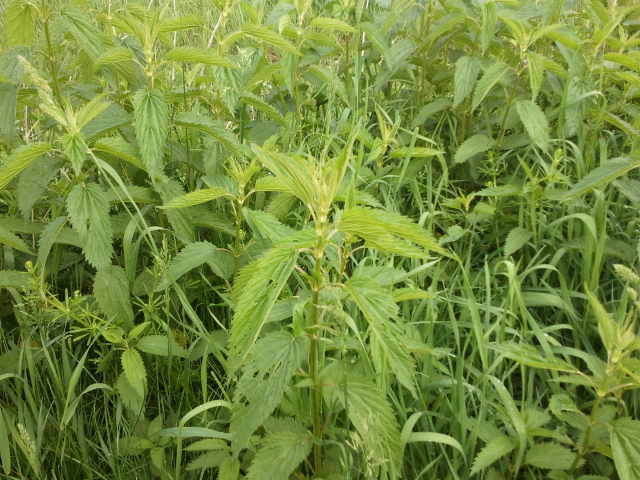
Our first lesson was that you can eat nettles. I was a bit skeptical at first. They are called stinging nettles for a reason. I followed her lead and just picked the tippy top of new growth. It tasted somewhat like peas, and was super delicious. For me, it was exciting because once I identified that plant, the whole vegetation along the ditch seemed to come alive. Rather than a mass of “weeds,” I could pick out various shapes, and the nettles jumped out at me. I scanned the ditch and nettles stretched as far as the eye could see. There was also a large stand of the next plant we learned to identify:
Lisa introduced this as the kill-you-dead plant. We are not to pick anything near this. And once she pointed it out to us, like magic, suddenly I recognized it all up and down the ditch. She then said she would show us where to pick nettles safely – and please do not pick nettles from the poison hemlock ditch. Just because, you never know, you might grab the wrong thing. I’m not entirely sure if it is really dangerous to pick from the ditch or if she is being cautious because she is instructing nine very inexperienced women to eating leaves, but I’m taking her word for it.
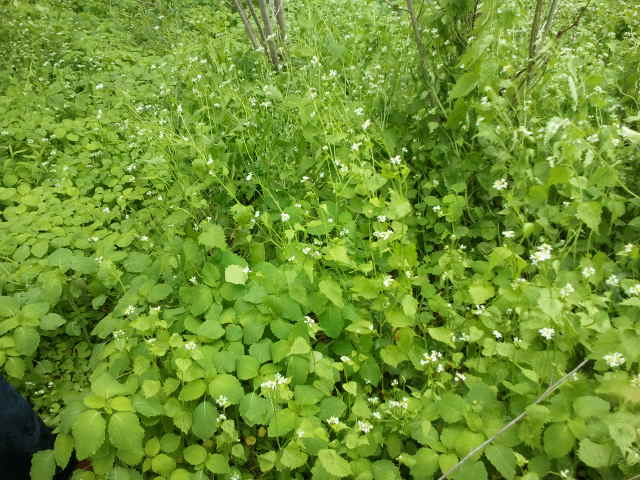
Next on our tour was garlic mustard. I’ve heard about nature centers having “pulls,” as this is a very invasive species and it is everywhere. As with the nettles, once I learned what it was, I suddenly saw garlic mustard EVERYWHERE. We tasted a few of the leaves, and I really liked it. Bitter, but a good kind of bitter. I could definitely imagine coming back to harvest some while we are waiting for our regular CSA season to start (only a few more weeks, but I am craving greens!)
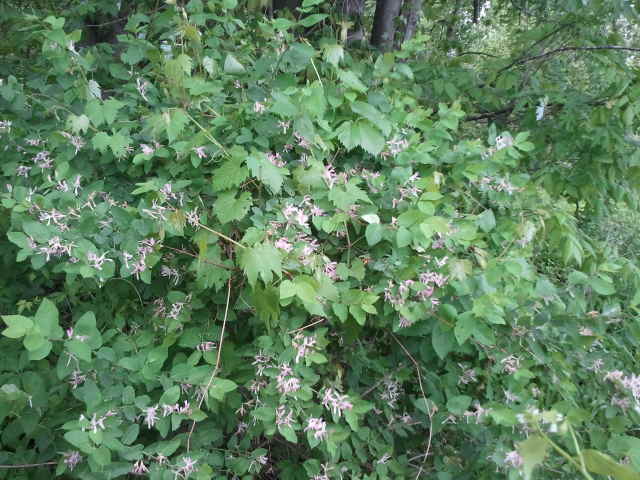
We also came across a honeysuckle, which was not as sweet as I had thought, but Lisa had told us that since it was after a rain and also since it had been a cool spring, it wouldn’t have much flavor.
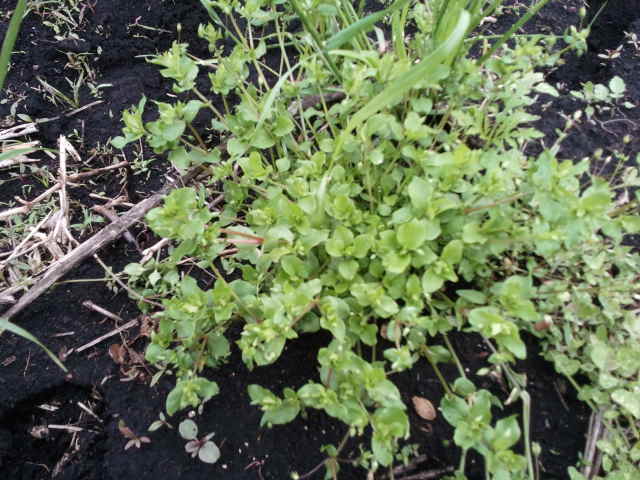
The final plant we learned to identify was chickweed. It’s not sought after in the culinary sense, but apparently it is herbalist gold for making salves.
We wrapped up the evening with supper at the picnic tables. Lisa made us a greens and mushroom frittata. It was delicious. We had some raspberry leaf, nettle, and oat straw tea which was also delicious, and oh, so nourishing. The meal was rounded out with a salad of violet leaf, mint, nettles, and chives.
I never thought that eating weeds could be so tasty. I look forward to learning more about foraging/plants over the next few months. There is something empowering about being able to recognize the edibles, to find plant friends among what was to me just a mass of green.
This post shared at Food on Fridays, Fight Back Fridays, Frugal Fridays, Frugal Tuesday Tip, Simple Lives Thursday

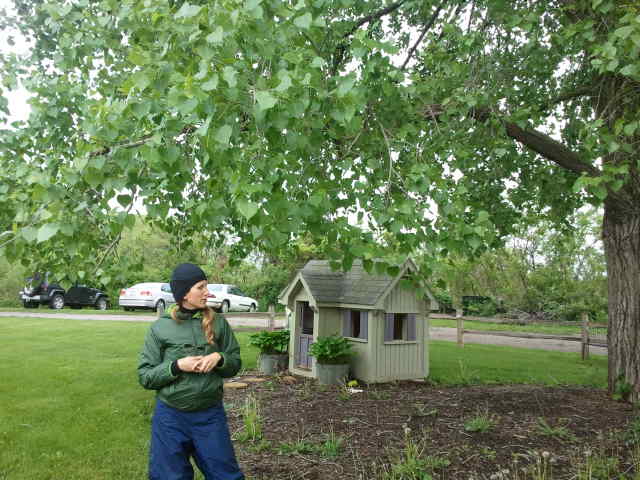
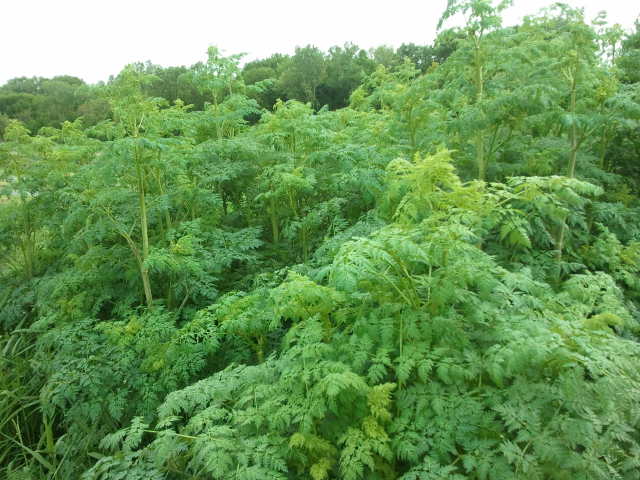
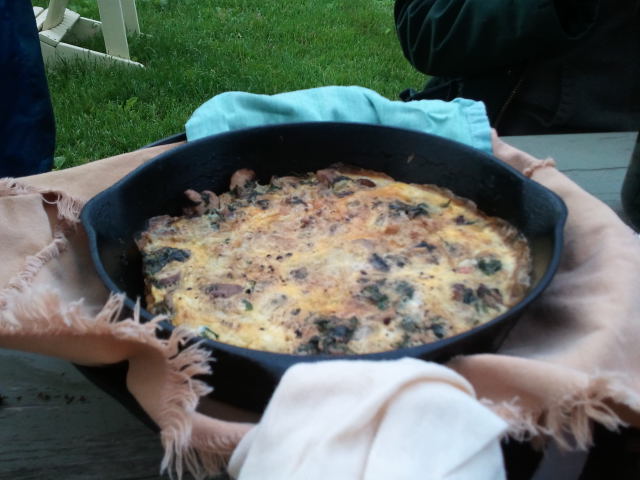
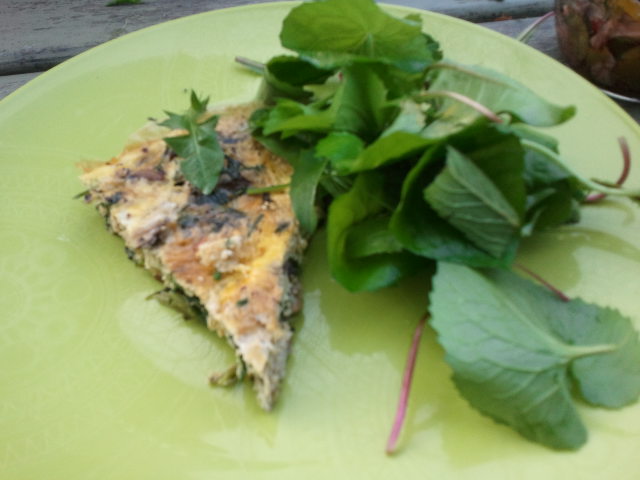

Had a lot of fun last nite! Glad to be on this learning journey with my community. It will be a fun summer.
What fun – I would love to have someone teach me – I am so nervous to just go by pictures!
Hi Christy.
Learning to forage and eating wild foods is a fun journey!
I recently wrote a forager’s where to start guide for The Rapidian that you may find of interest with some helpful tips on where to start your adventure into wild edibles: http://therapidian.org/cultivating-sense-place-becoming-forager
Happy plant learning!
~Lisa
Thanks Lisa for a great resource!!!
This is awesome! Do you think you will be comfortable enough to pick by yourself off a farm?
I think so, but there is plenty on the farm for us to use.
I think the farm does have a bounty of *weedy* herbs, but we also need to keep in mind its location relative to the rest of the suburban developed area immediately around it — There is not a lot of open wild space in that area, so I posit to the farm – and to us – what is sustainable harvesting for that area? Just food for thought, and something we are ethically obligated as foragers…
My hope for this class is that not only will the people get comfortable knowing the wild plants on the farm, but actually will return back home to better know the plants that surround them and THEN head out for harvesting in their own area.
Takes a few seasons to get the rhythms of the land we live on, learning plant ID, using guidebooks and seeing the seasonality of it all, but it’s so rewarding. AND it develops a caretaker relationship with the land that nourishes us.
Well put. That’s something I really appreciate about the emphasis in your class. Not to get all Wendell Berry, but the idea of a relationship with the land and plants and our food is growing on me more and more in this season of life. Will be posting a review of American Terroir soon which has underscored this for me in recent weeks.